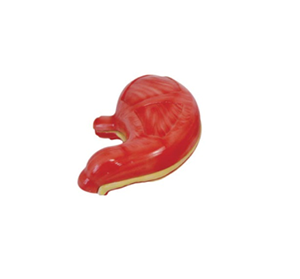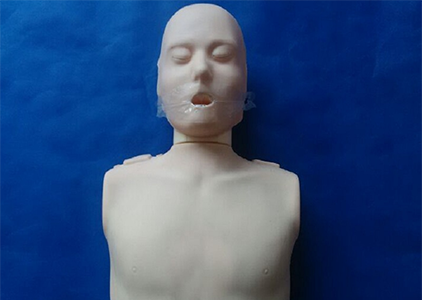
The application of gastric anatomical model in clinical training can indeed help doctors to perform stomach operations more efficiently. These models not only improve the physician's operational skills, but also drive personal growth and academic professional advancement through enhanced understanding of the stomach's structure and function.
1. Improve operation skills and surgical accuracy
The anatomical model of the stomach provides a high-precision anatomical structure that allows physicians to simulate various stomach operations, such as gastroscopy, gastrointestinal anastomosis surgery, stomach resection, and more. Through repeated practice, doctors can be familiar with the shape, position and function of the stomach, so as to reduce errors in actual operation and improve surgical accuracy. Studies have shown that doctors trained using models of stomach anatomy show higher success rates and lower complication rates during clinical procedures.

2. Accelerate the learning process
The gastric anatomy model provides doctors with a repeatable training platform, which allows doctors to safely practice stomach manipulation without patient involvement. This type of training not only accelerates the acquisition of skills, but also helps doctors feel more confident when facing complex cases. The data show that through simulation training, medical professionals can significantly shorten the operation time in actual clinical operations and reduce the risk caused by lack of experience.
3. Strengthen clinical judgment and decision-making ability
Simulation training on the stomach anatomy model not only allows doctors to improve their surgical skills, but also helps them better understand the pathological changes of different stomach diseases. For example, the model can simulate different clinical situations such as stomach ulcers, tumors or stomach bleeding, and doctors can master the corresponding emergency treatment and surgical decisions during training. This training provides doctors with more comprehensive clinical judgment skills, which helps them make more accurate decisions in actual treatment.
4. Improve patient safety and treatment effect
Through the training of the stomach anatomy model, doctors can improve their skills in a comprehensive and stress-free environment to ensure that the operation is more accurate in real surgery. Clinical studies have found that doctors trained by the model can operate more smoothly and efficiently in actual surgery, which can effectively reduce the harm to patients during surgery, thus improving the overall treatment effect.
5. Personal growth and academic progress
Gastric anatomy models not only help doctors improve their clinical skills, but also promote personal growth. Through practical training, doctors gradually improve their professional quality and obtain more academic results. The application of the model promotes the combination of theory and practice, and also provides strong support for the research of gastric diseases and the innovation of surgical methods. The academic circles pay more and more attention to this kind of simulation training, which has become an important part of modern medical education.
conclusion
The application of gastric anatomy model not only improves the efficiency and accuracy of gastric operation in clinical practice, but also accelerates their learning process and promotes the improvement of clinical judgment and decision-making ability. Through simulation training, doctors can reduce errors and increase confidence during real surgery, ultimately improving patient safety and treatment outcomes. In addition, anatomical models of the stomach have also played an important role in driving advances in medical education and academic research.







Sophie Asveld
February 14, 2019
Email is a crucial channel in any marketing mix, and never has this been truer than for today’s entrepreneur. Curious what to say.
Sophie Asveld
February 14, 2019
Email is a crucial channel in any marketing mix, and never has this been truer than for today’s entrepreneur. Curious what to say.